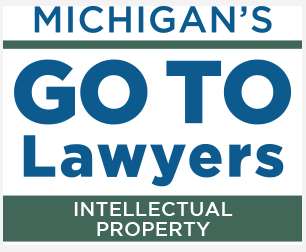Intellectual Property Insights from Fishman Stewart PLLC
Newsletter – Volume 21, Issue 19

Selling the Intangible: Building Billion Dollar Companies with Intellectual Property
By Douglas P. LaLone
Airbnb transformed the travel and lodging industry by expanding the “Share Economy” to our most private realm: our home. Airbnb connects customers with more than 150 million hosts in over 65,000 cities and 191 countries who will share their homes – yet Airbnb owns none of those homes it sells to customers. Despite this lack of ownership, or maybe because of it, Airbnb generated $4.8 billion USD of revenue in 2019, became a public company in 2020, raising $3.5 billion USD for its initial public offering, and is valued today at $130 billion USD. A company does not need to have tangible assets to be tremendously valuable in the marketplace.
How is it possible to generate such revenue when you don’t own what you sell? It’s simple: each is a SaaS (Software as a Service) based online marketplace company built on a portfolio of intellectual property (IP) . Airbnb owns 59 U.S. trademarks and 74 U.S. patents, not to mention a plethora of other IP. Other intellectual “intangibles” of the company include mobile applications, software, data analytics, machine learning, predictive modelling, customer lists, listing photos, host lists, and social media.
Uber, the ride sharing giant, is another example of a SaaS company whose foundation is built on an IP portfolio. In 2020, they delivered 5.7 billion rides in 34 countries around the world. Yet they did not own any of those vehicles. They generated $26 billion USD in revenue last year with a current market cap of $77 billion USD. Uber’s enterprise value can be directly attributed to its cache of IP assets. Uber has 83 US trademarks and 579 US patents, among other IP assets.
You cannot hold an Airbnb or Uber product in your hand. Yet their innovative services sit on top of a digital platform that today is protected by a moat of IP. IP is the legal “monopoly” that protects valuable intangible innovations. Patents afford the patent owner the right to exclude others for making, using, and selling the patented innovation. Trademarks (your brand) afford the owner the right to exclude others from using confusingly similar marks.
For Airbnb and Uber, their digital creativity leverages tangible assets (homes and cars) owned by others to generate billions in revenue. How is your company leveraging its intangible assets (IP), and are you creatively leveraging the tangible assets (physical assets) of others? If you are doing the latter, you could be a SaaS and on to something highly scalable and valuable as an enterprise.
It is intangible assets in the form of intellectual property that helps these types of companies command such a tremendous valuations. Had they not secured their IP, the competition could (or would) steal their most precious assets, their creativity, and all of their R&D investment would have been in vain. A return on IP investment can be measured by higher valuations, higher multiples at an exit, and of course significant market capitalization. Just look at Airbnb and Uber’s market capitalization. Thus, if you want to increase your enterprise value, no matter what the business is, consider leveraging your creativity by developing an IP strategy that matches your company vision. Who knows, you could be the next SaaS company that generates billions by using others’ assets!
For more on the value of enterprise see our white paper “Extracting Enterprise Value from Organizational Creativity.”
Published September 17, 2021

Autumn Colors are Arriving
The air is brisk, hot apple cider is brewing, and the leaves are changing colors. Fall is finally here! As a law firm based in the Midwestern United States, Fishman Stewart looks forward to autumn and all the exciting changes the season brings to our home. If you would like to track the changing colors of the trees with us, check out this interactive map: https://smokymountains.com/fall-foliage-map/
IDENTIFYING, SECURING AND ADVANCING CREATIVITY®








